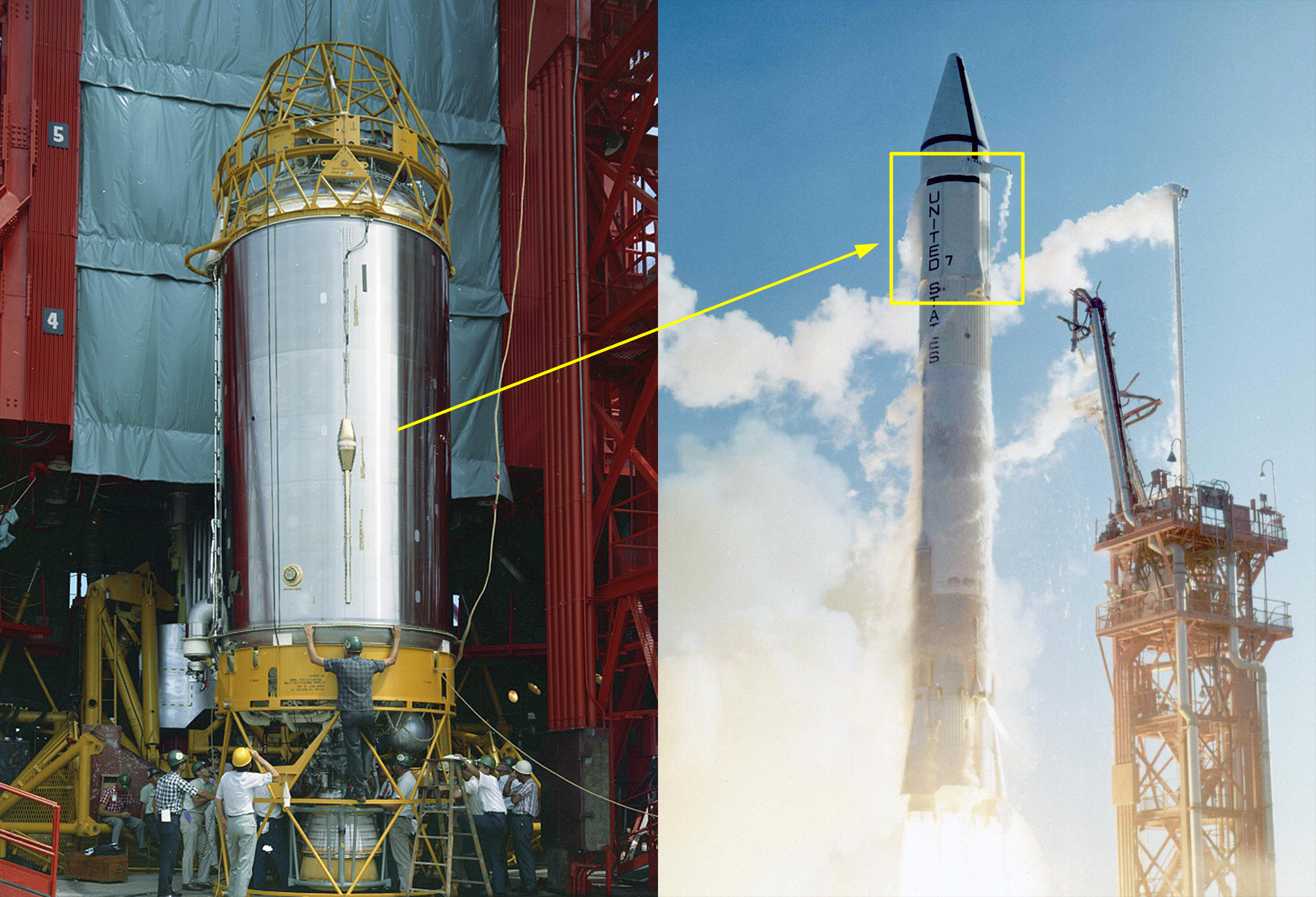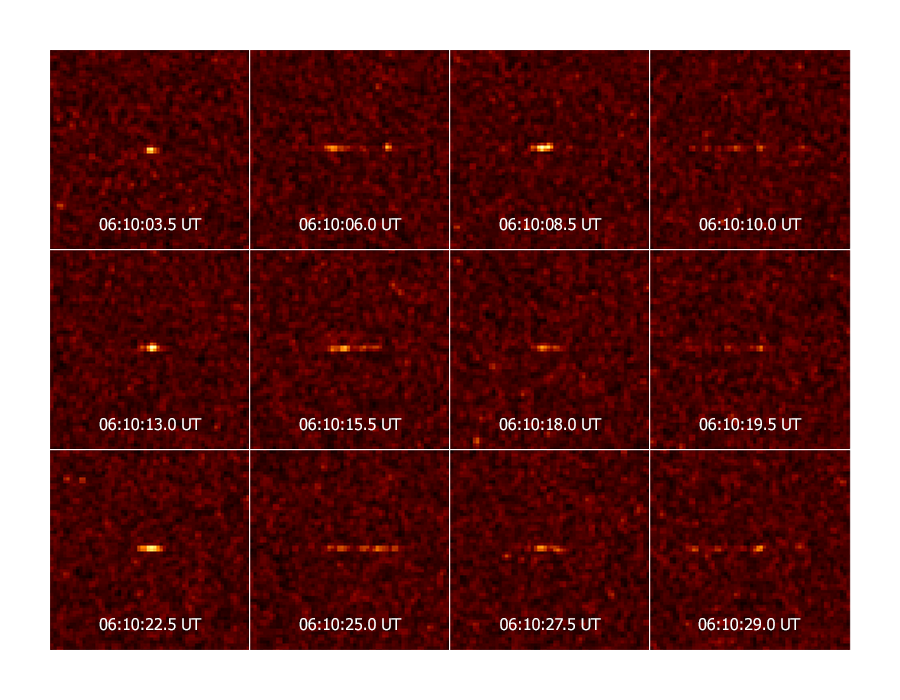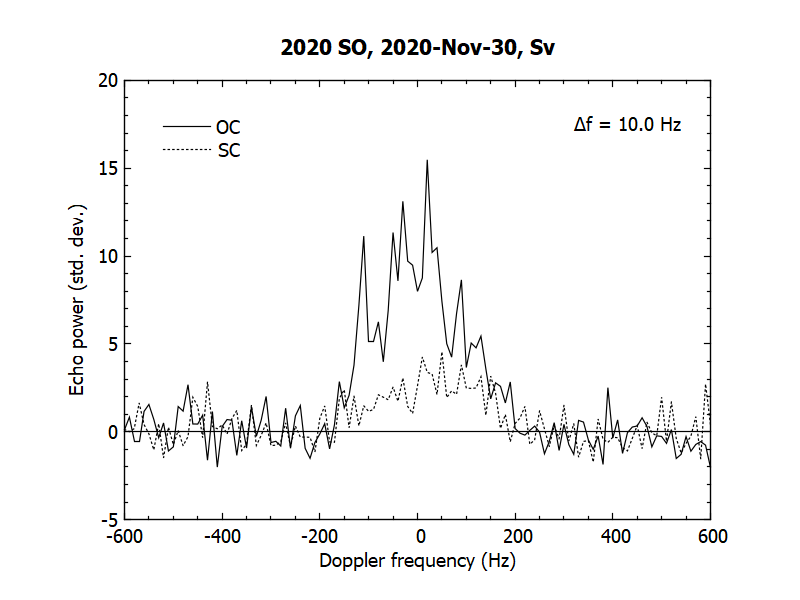2020 SO
Discovered on September 17, 2020 by Pan-STARRS 1 at Haleakala on Hawaii. This near-Earth object identified to be the Surveyor 2 Centaur rocket booster launched on 20 September 1966.

Orbital and Physical Characteristics
| Epoch | 2020 Dec 17 |
| Mean Anomaly | 272.37504° |
| Argument of Perihelion | 315.77092° |
| Longitude of Ascending Node | 216.89078° |
| Inclination | 0.13967° |
| Eccentricity | 0.0018378 |
| Semimajor Axis | 0.9862519 AU |
| Orbital Period | 0.98 years |
MOID |
0.00106 AU |
| Orbit type | Atira |
| Absolute Magnitude | 28.86 |
| Diameter | ~10 m |
| Rotation period | ~9.5 s [1] |
Radar scattering properties
SC/OC |
0.31 [1] |
| Radar albedo | ~95% [1] |
Close Approach to the Earth
| Date of encounter | 2020 Dec 01 | 2021 Feb 01 |
| Distance | 0.00034 AU (0.13 lunar distances) | 0.00151 AU (0.59 lunar distances) |

Observation Schedule
| Date | Window, UT | Receiver |
Transmitter |
Frequency, MHz |
λ, cm |
Ptx, kW |
R, au |
RTT, sec |
SNR/RTT |
|---|---|---|---|---|---|---|---|---|---|
| 2020 Nov 30 | 05:00 - 06:25 | RT-32 (Sv) | DSS-14 [2] | 8560.0 | 3.5 | 440 | 0.00136 | 1.35 | 70 |
Range-Doppler radar images
Bistatic DSS-14/RT-32 range-Doppler radar images of near-Earth object 2020 SO obtained at Svetloe observatory on November 30, 2020. Range (distance from the observer) increases down at 19 m per pixel and Doppler frequency increases to the right at 10 Hz per pixel. The images are normalized so that the noise has zero mean and unit standard deviation.

The integration time of each image is 0.5 sec. The images are arranged in chronological order and correspond to one of four object rotational phases, repeating with a period of 9.5 sec, which corresponds to photometric observations. Obtained range-Doppler radar images confirm that the object has an elongated shape with a length of about 10 meters and a width of about 3 meters.

Range-Doppler radar image obtained from 06:10 to 06:11 UT. During this integration time, the object made more than 6 full rotations.
Echo power spectrum
Bistatic DSS-14/RT-32 continuous wave echo power spectra of near-Earth object 2020 SO obtained at Svetloe observatory on November 30, 2020 from 05:00:02 to 05:00:12 UT. Solid and dashed lines denote echo power in the opposite circular (OC) and same circular (SC) polarizations as that of the transmitted wave. The obtained power spectra were used to determine the сircular polarization ratio of 0.31, as well as the radar albedo of 2020 SO, with a value of about 95%. This result confirms that the surface of the object has a high reflectivity in the radio range, typical for metals.

Remarks
Yu. Bondarenko et al., 2020.
We thank L. A. Benner and the technical staff at Goldstone for the help with the radar observations.